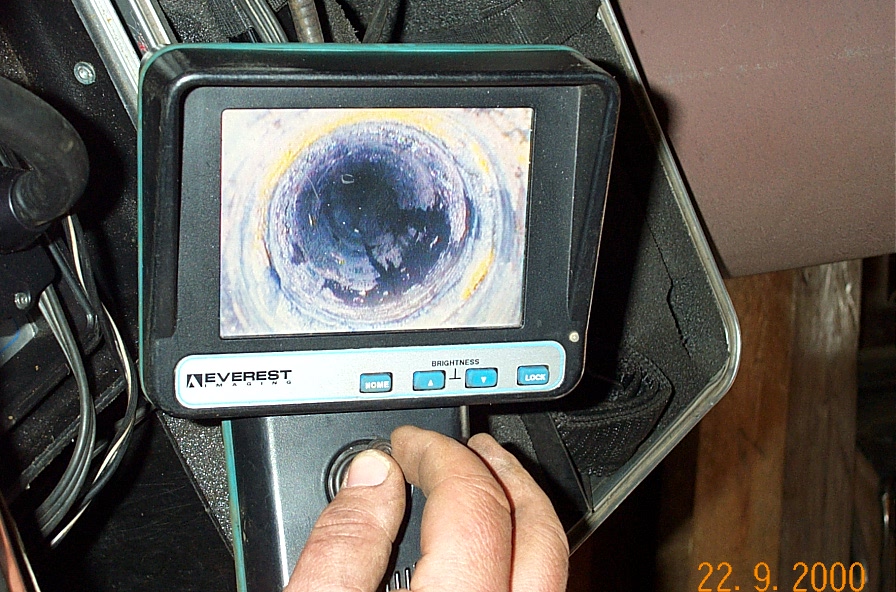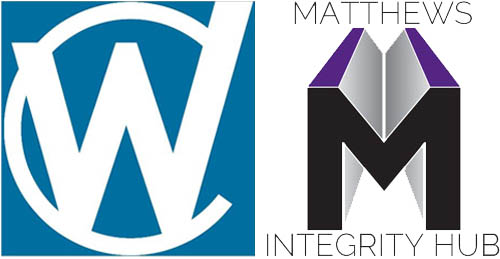WILKINSON COUTTS TRAINING LTD
THE FUTURE OF NON-INTRUSIVE INSPECTION (NII)?
NII is here already

Here at Wilkinson Coutts training, one thing we’ve learned from our involvement with API and other inspection codes is that, for a few years now, they have been coming round to the way of thinking that in many cases, NII can be a valid replacement for Internal Visual Inspection (IVI). API 510 allows ‘on stream’ inspections (as they call them) to replace IVIs for vessels in straightforward process conditions with good operating history. Similarly, API 570 (pipework inspection) has never been particularly supportive of breaking pipework containment for internal examination of pipe spools and valves. Generally speaking, many US codes take a similar view; inspection is, after all, a support activity for pressure plant, not the main reason for its existence.
Back in the UK, DNV publication RP-103 Non-Intrusive Inspection,first published back in 2007 set an important benchmark for methods of assessing the validity of replacing NII with IVI. Several upstream and downstream facilities in the oil & gas industry claim to have tried it, with positive results. The regulatory authorities recognize its existence but, as is their way, sit firmly on the fence as to whether they agree with it or not. As always, they prefer the benefits of hindsight after an incident has happened to comment what should have been done, or not done, to prevent an accident.
The reality of POD
A lot of successful Integrity Inspectors come from an NDT technician background so don’t have that much difficulty in appreciating the benefits of NDT as an inspection tool. What remains largely hidden in many NDT techniques however is the factor of probability of detection (POD) when the techniques are used in real in-service site conditions. Even codes and standards that would claim to be at the centre of NDT implementation matters are often reluctant to mention it.
In practice, POD governs the real effectiveness of NII techniques. Various industry studies over the years have tried to quantify POD for different NDT techniques but results and opinions differ widely. The result is that even independent industry bodies and classification societies find it a difficult subject to address, so it remains as an obstacle to the wholesale acceptance of NII as a replacement for IVI.
What about the reality of IVI?
Supporters of NII, and there are many, often point to the inadequacy of its opponent, IVI in actually finding and classifying in-service pressure equipment defects. They have a point; many in-service inspectors report that most internal vessel inspections actually find no integrity-threatening defects at all so were (in hindsight) a fruitless activity that could have been avoided. Figures are difficult to agree on this but overall, perhaps less than 10% of IVIs find any major problems. In many cases the design features of pressure vessels and pipework in the oil & gas industry (limited internal access, internal furniture etc) that would limit the applicability of NII techniques from the outside, also act to limit internal visual access from the inside, thereby balancing the whole argument about which is the better.
The DNV RP-103 view
If you read between the lines, DNV RP-103 takes a measured view on the limitations of IVI. Whilst the purpose of the document is to provide a methodology for justifying NII it on the quiet premise that any NII performed must only be just as good as IVI, not better. It therefore accepts that the effectiveness of IVI is limited. It doesn’t make much of this argument because that’s not what the document is about, but it is always there in the background.
Future trends
If you follow the trends in inspection publications, and the reports of companies in the oil & gas industry it seems that NII is here to stay. Several major upstream and downstream operators have aired their intention to eliminate all IVIs on their equipment over the next 5-10 years. Many have already started with replacing IVIs with NIIs on non-hydrocarbon plant, with plans to extend this to hydrocarbon equipment is soon as it can be justified.Looking forward a few years, the increasing use of robotic inspection equipment will almost certainly result in a reduction of IVIs, so it’s a growing area.
There’s the challenge
Its developments like these that make a career in Asset Integrity interesting. Read the linked article: The robots are coming . If you want to know more about moving on from NDE then read the linked article: NDT Upskilling: Mid-career lane changing. If you want to check the suitability of your knowledge, then test yourself with the various technical quizzes around the Matthews Integrity Hub website. Start with the: NDT Upskilling knowledge QUIZ
DID YOU FIND THIS ARTICLE USEFUL?
Who are WILKINSON COUTTS ENGINEERING TRAINING?
Wilkinson Coutts Engineering Training Ltd was founded to meet the needs of the inspection and management of static pressure equipment industry. Having delivered API, ASME and other Plant Inspection training to individuals and companies across the globe, we know how important it is that delegates receive personal attention and support during our courses.
How we differ
As a small company we are interested in the integrity training industry and the people in it. If you deal with us you will experience this in our five-star customer service promise.
We are pleased to be associated with Matthews Integrity Hub website and you’ll see us as active contributors to its views on the integrity industry. Over the coming months you will see the rapid expansion of our course scopes and list of technical publications. Check out our website www.wilkinsoncoutts.com. If you have any direct queries, then pick up your phone and give us a call.






